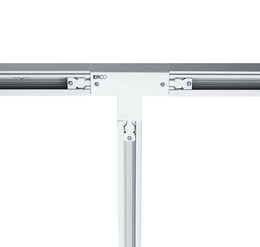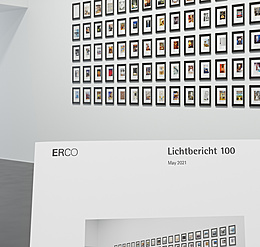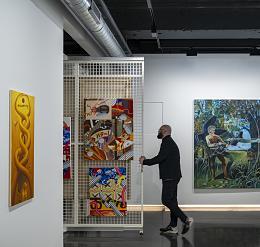| Exhibition concept |
Art and the space |
Light |
1. Objective reception of art |
- Realistic, unemotional art presentations
- Calm atmosphere where the art and the room blend together
|
- Light: uniform brightness distribution, hardly any modelling, no brilliance
- Daylight: diffuse incidence of light through windows or ceiling
- Lighting: wallwashing for uniform brightness distribution
|
2. Subtle emphasising of artworks and motifs |
- Discreet emphasising of exhibits
- Calm atmosphere where art slightly dominates the room
|
- Light: low brightness contrasts, slight modelling and brilliance
- Daylight: diffuse incidence of daylight supplemented by discreet accent lighting
- Lighting: wallwashing and accent lighting. Subtle contrasts in brightness.
|
3. Dramatic display of exhibits |
- Artworks are placed in the foreground
- Emotional display of exhibits
|
- Light: intensive brightness contrasts, strong modelling/brilliance
- Lighting: accent lighting matched to the size and shape of the images. Sculptures: steep angle of incidence for striking shadows.
|
4. Magically illuminating artworks |
- Only the surfaces of the image are seen
- The art is intensified; the room seems to disappear
|
- Light: uniform brightness only on the image surface with no light in the room
- Lighting: contour spotlights with crisp light beams
|
5. Interpreting of artworks with hyperrealism |
- Artworks are placed in the foreground, details are emphasised
- Image characteristics are emphasised to intensify the reality
|
- Light: Brightness and colours are intensified
- Lighting: dimmable contour spotlights for the differentiated illumination of picture sections and spotlights with multichannel colour control for modifying the spectrum (matamerism)
|
6. Dynamic communication of exhibitions |
- Lively displays of art
- As well as purely observing the art, the entertainment factor is increased
|
- Light: dynamism from brightness, colour temperature and spectrum
- Lighting: time-based light control, sensors or apps
|














